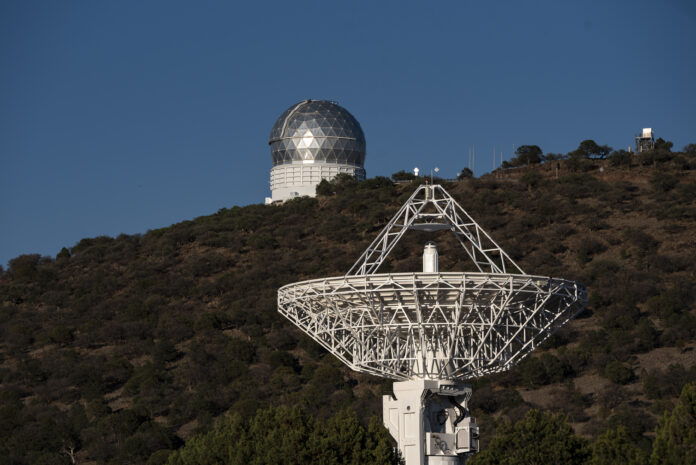
FORT DAVIS McDonald Observatory is honored to receive a grant from Permian Basin Area Foundation in support of the Observatory’s ongoing efforts to renovate exhibits at its Frank N. Bash Visitors Center. The exhibits are a meaningful part of the visitor experience, providing an opportunity to learn about the fundamentals of astronomy and the questions it’s trying to answer.
Since the Frank N. Bash Visitors Center first opened in 2002, an estimated 1.5 million people have interacted with its exhibits.
“They’ve held up well,” Katie Kizziar, assistant director for education and outreach at McDonald Observatory, said in a news release. “But since then, there have been major advances in scientific discovery. Add to that our growing attendance numbers and it became clear that making some updates would help us serve the public even more effectively.”
McDonald Observatory has launched a $3.3 million campaign to upgrade and renovate its visitor spaces. Upgrades to the visitor experience will include exhibit renovations, facility upgrades, and an expansion of its outdoor public spaces. With the help of Permian Basin Area Foundation’s $260,000 grant, exhibit renovations will be the first step.
Current exhibits share:
- How astronomers, through a method called spectroscopy, collect starlight, break it into a spectrum of colors, and analyze the spectrum to learn about stars, galaxies, and other components of the universe
- A real-time spectrum of the light from our closest star, the Sun
- The importance of dark night skies and ways to lower light pollution
- The history of McDonald Observatory and its contributions to the field of astronomy
Support from Permian Basin Area Foundation and other donors will enable McDonald Observatory to update some of its current exhibits while adding new topics.
When complete, renovations will add information about:
- The abundance of planets outside of our solar system
- The characteristics and evolution of galaxies
- The lives of stars
- The mysteries of dark matter and dark energy
- The Giant Magellan Telescope and the next generation of scientific discovery this amazing instrument will make possible
McDonald Observatory is considered a leader in public education and outreach. “Most active research observatories are not as accessible to the public, nor do they offer the wide range of programs we are able to provide,” Taft Armandroff, director of the McDonald Observatory, said in the release.
That’s because, in addition to its commitment to research and higher education, the Observatory’s mission is to contribute to the public understanding of astronomy and to inspire Texas schoolchildren.
In a typical year, 75,000 people visit the site, making it a top destination in the region. Daytime tours provide front row access to the telescopes and research they support, while evening star parties evoke the wonder and awe of seeing night skies filled with endless stars.
Additional outreach includes educational tours and activities for K-12 students, workshops and lesson plans for teachers, star party livestreaming for astronomy enthusiasts, and more. McDonald Observatory also produces StarDate, the longest running science radio program in the United States.



